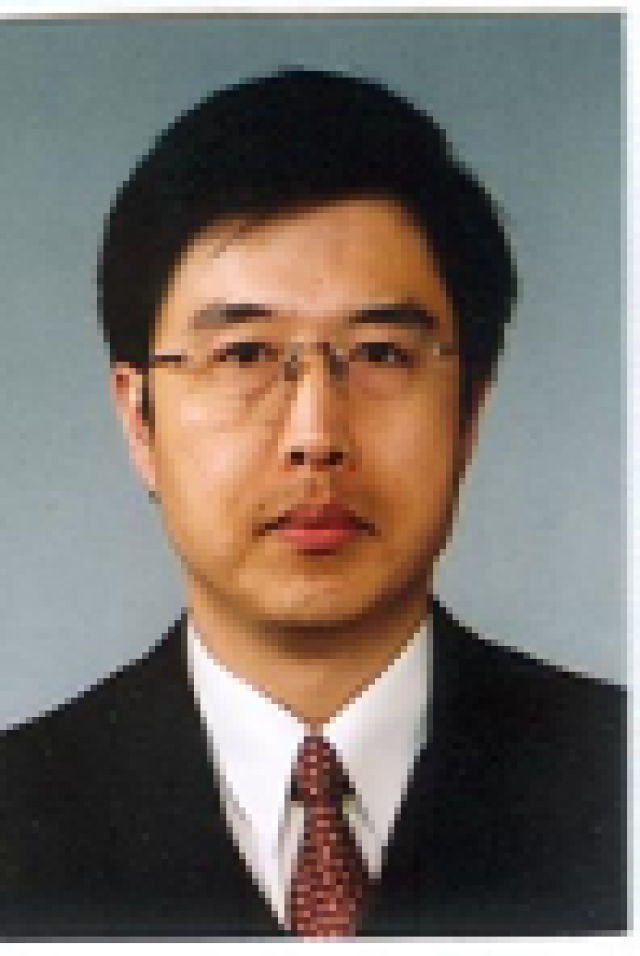Xingjun Liu, Jinxin Yu, Yin Wang, Liuping Chen, Hongxin Liu, Cuiping Wang
Abstract: Ni-base superalloy is widely used in aero engines. This kind of alloy is coherence-strengthened by γ′ phase which made it have high strength at elevated temperature. The maximum service temperature of the alloy, however, has nearly approached the melting point of Ni, which is 1455℃. Thus, new superalloys are required desperately. The melting point of Co (1495℃) is higher than that of the Ni, but the traditional Co-base superalloy is strengthened by carbides precipitates. Unlike the coherence-strengthened Ni-base superalloy, the high temperature strength of the traditional Co-base superalloy is low. In 2006, a new γ′-strengthened Co-base superalloy was found by Japanese researchers. But its γ-γ′ two-phase range is of vital narrow and the γ′ phase in the alloy is unstable. To improve the high-temperature performance of the alloy, the focus of these years has been trying to expand the γ-γ′ two-phase range and stabilize the γ′ phase. Nevertheless, most of the researches were carried on via trail-and-error method, which is low efficiently. To accelerate the research of the Co-base superalloy, our group propose a new design system based on the materials genome and big data technology. Assembling the first-principle calculation, molecular dynamics simulation, phase diagram calculation, phase-field calculation and machine-learning, the phase information, composition, microstructure and mechanism property of the alloy could be high-throughput calculated. With the help of the new design system, the prediction of the γ-γ′ two-phase range and the optimization of the compositions could be calculated efficiently.
The design system assembles multiple materials calculation software. With the function of data transmission, the system could carry on the high-throughput calculation and composition screening automatically. The structure of the system is shown in Figure 1. The function of the system includes: display of the simple atomic model and cell expansion; data transmission; data management; visualization and screening of the calculation result; intercommunication of different software.
Based on the design system, the properties of the Co-base superalloys such as phase stability, elasticity and thermodynamic properties could be calculated via first-principle calculation. The suitable strengthening elements could be chosen from the candidates based on the calculation results. The information of those chosen elements would be transferred to the thermodynamic calculation part. The phase of different compositions combined by the former chosen elements at different temperature could be calculated automatically. During this process, a great amount of element combinations would be calculated. Using the screening function, the suitable composition range could be obtained. The results could guide the establishment of the experiment scheme and fasten the design process.
Apart from the traditional material calculation methods, machine-learning method is applied as well. Models described the relationships between the composition, process parameter, microstructure and property are established based on the machine-learning algorithms like support vector machine, random forest, neural network, etc. The existent of the γ′ phase and other phases, the solvus and the area fraction of the γ′ phase are predicted. 10-fold cross validation is applied to evaluate the performance of the model. Algorithm with the highest accuracy is chosen to establish the predicting model. The relative error of the predicting model is less than 5%. All the predicting models of different properties are assembled to achieve the multi-objective optimization of the Co-base superalloy. By input the design targets of the alloy, the compositions, which fit the requirements of different properties like the solvus and the area fraction of the γ′ phase, are chosen from over 100,000 candidates. The results could guide the establishment of the experiment scheme and fasten the design process. Figure 1(b) is the scheme of the machine-learning process.
The new Co-base superalloy integrated design system could achieve the trans-scale design of the alloy, including the microscopic-scale first-principle calculation, the mesoscopic-scale phase diagram calculation and macroscopic-scale machine-learning method. The accuracies of the predicting models are evaluated by experimental validation. The design system could accelerate the design of the alloy.
This study is supported by National Key R&D Program of China (No.2017YFB0702901).
Keywords: superalloy, high-throughput calculation, integrated design system, composition optimization.
新型Co基高温合金集成设计平台的开发及其应用
刘兴军1,2,*,于金鑫2,王音3,4,陈柳萍1,刘洪新4,王翠萍2
哈尔滨工业大学(深圳)材料基因与大数据研究院,广东深圳 518055
厦门大学材料学院及福建省材料基因工程重点实验室,福建厦门 361005
鸿之微(上海)科技有限公司,上海 201206
深圳鸿晶科技有限公司,广东深圳 518116
摘要:由于Ni基高温合金通过γ′相共格强化在高温时仍然可以保持较高的强度,目前在航空发动机被广泛使用。然而由于Ni的熔点是1455°C,已经接近承温极限,亟待开发新一代高温合金。Co的熔点高于Ni(1495°C),然而传统的Co基高温合金的强化机制主要是碳化物沉淀强化,没有与Ni基合金一样的γ′相强化机制,导致其在高温强度很低。2006年日本学者发现了具有γ′相强化机制的新型Co基高温合金,然而其体系中的γ-γ′相区很窄,而且γ′相为非稳定相。近年来国内外学者的研究主要集中在通过添加合金元素扩大Co基高温合金的γ-γ′两相相区,并提高γ′相稳定性,从而提高其高温性能。然而,目前高温合金主要通过实验手段采用“试错法”进行研究,这种方法效率较低且浪费大量的人力和物力。为了缩短新型Co基高温合金的研发周期,本团队基于材料基因与材料大数据技术,针对新型Co基高温合金的组织特点以及合金综合性能的快速优化设计问题,集成了第一性原理、分子动力学、相图计算、相场模拟和机器学习等多尺度设计方法,开展合金相结构、成分、组织和力学性能的高通量计算,开发了新型Co基高温合金的集成设计平台,以实现新型Co基高温合金中γ-γ′两相区的预测及成分筛选,提升γ′相的高温组织稳定性及力学性能,提高合金研发效率。
该平台集成多款材料计算软件,并通过数据的传递,以实现自动化地高通量计算和筛选,平台构架如图1(a)所示。平台的基本功能有:实现简单的原子模型显示和扩胞功能;具有作业递交管理及高通量计算系统;材料的特征数据库系统;计算结果可视化及筛选;第一性原理计算、分子动力学模拟、相场模拟、相图计算等软件的互通。



图1新型Co基合金集成计算平台构架(a)与机器学习设计系统模块(b)
除了传统的材料计算方法,该平台也集成了基于机器学习算法的合金设计模块。通过使用支持向量机、随机森林、神经网络等机器学习算法建立了描述新型Co高温合金的“成分-工艺-性能”关系的数学模型。预测的合金关键性能包括:强化相γ′相存在与否、杂相存在与否、γ′相固溶温度和γ′相体积分数。采用十折交叉验证方法对基于不同算法的模型进行评估,选取精度最高的模型进行合金性能预测。预测模型的精度经过实验测试其相对误差不高于5%。之后将各个性能预测模型进行耦合,搭建新型钴基高温合金快速设计系统,可以实现合金多目标性能优化。通过在筛选框输入合金设计性能要求,如体积分数、固溶温度、保温温度、保温时长等条件,可以在超过十万组的候选合金成分中进行快速筛选,给出合金成分方案,通过实验验证,加速合金设计。图1(b)为机器学习计算模块示意图。
新型Co基高温合金集成设计系统实现了合金的跨尺度设计,包含了微观的第一性原理、介观的热力学计算、宏观的机器学习等计算方法,预测模型通过了实验验证,可以加速合金设计效率。
本研究工作获得了国家重点研发计划“新型钴基和铌硅基高温合金高通量设计/制备集成与示范”的资助(项目编号:2017YFB0702901)。
关键词:高温合金;高通量计算;集成平台;成分设计

哈尔滨工业大学(深圳)教授,厦门大学讲座教授,哈尔滨工业大学(深圳)材料基因与大数据研究院院长,国家杰出青年科学基金获得者,深圳市国家级领军人才,国家新材料产业发展战略咨询委员会委员,中国物理学会相图专业委员会副主任,中国空间科学学会空间材料委员会副主任,中国材料研究学会常务理事。主要研究方向:计算材料学、材料设计、复合材料、高温合金等。在Science, Phys. Rev. Lett等学术刊物上发表论文300余篇,获得授权国家发明专利41 项。并获得国内外和省部级学术奖励10余项。
Email:xjliu@hit.edu.cn